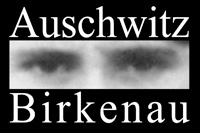




Women
First women were sent to Auschwitz in March 1942. Initially the women stayed in a separate part of Auschwitz I and in August 1942 they were transferred to Birkenau, where the women's camp was established. Women were also imprisoned along with their families in the so‑called Theresienstadt family camp (BII b), in Zigeunerlager (BII e) as well as in so‑called transit camps (BII c, BIII).
Women labored at demolishing buildings, landscaping, construction, transport and in sub‑camps. They also worked in Kommandos connected with the functioning of the camp—in hospitals, kitchens, showers, storehouses, and at sorting property plundered from exterminated Jews (Kanada). Hard physical labor and terrible hygienic‑sanitary conditions contributed to the spread of contagious diseases (typhus) and also led to the rapid wasting away of the organism (Muselmann). Physically and psychologically exhausted women were picked out by SS doctors during selection in the camp for death in the gas chambers.
Until mid‑1943, pregnant women were put to death. Later, they were allowed to give birth, but the newborns were killed. From the middle of that year, the killing of newborn non‑Jewish children was halted while Jewish children born in the camp continued to be put to death until the end of October 1944. Jewish prisoners whose pregnancy was detected after being overlooked during selection were subject to forced abortions. Women prisoners were also subjected by doctors to medical experiments.
A total of 131,000 women prisoners were registered in Auschwitz—82,000 Jews, 31,000 Poles, 11,000 Roma, and the rest were Russians, Belarusians, Ukrainians, Germans, Frenchwomen, and Czechs. They made up about 30 percent of all the prisoners registered in the camp. Several hundred thousand Jewish women classified during selection on the ramp as unfit for labor—the elderly, infirm, pregnant, or mothers with small children—were murdered in the gas chambers immediately after arrival.
